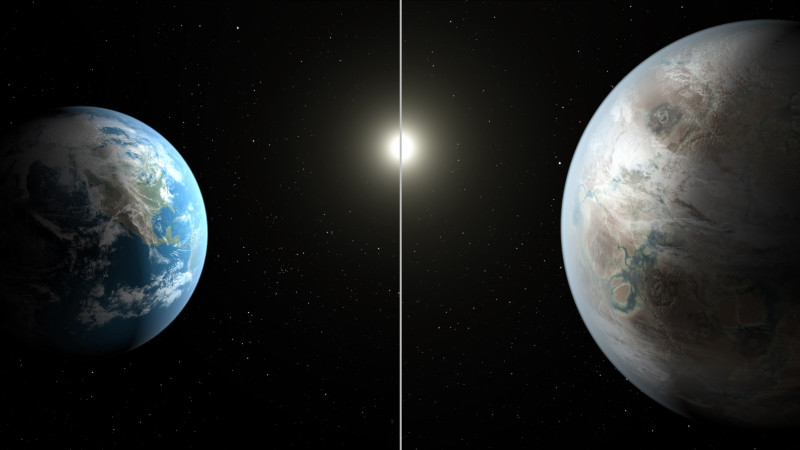NASA’s planet-hunting Kepler Telescope has spotted the first roughly Earth-sized world orbiting in the “Goldilocks zone” of another star – offering perhaps the best bet so far for life elsewhere in the universe.
A year on Kepler 452b, which is about 1,400 light years from us in the constellation Cygnus, is 385 days, meaning its orbit is just a bit farther away from its star than the Earth is from the sun. That places it squarely within what planetary scientists call the habitable zone, or “Goldilocks” zone — not too cold and not too hot.
“In my mind, this is the closest planet indeed to Earth,” Jon Jenkins, Kepler data analysis lead at NASA’s Ames Research Center in Moffett Field, Calif, said at a media briefing. “The star is a little bit older and a little bit bigger and brighter, so it’s good that it’s a bit farther from its star.”
And that star is what astronomers label a class-G, “main sequence” star, the same as our sun. It is of average size and luminosity. While astronomers have not ruled out life around either smaller, dimmer or larger and brighter stars, Jenkins notes that we know for sure that life can exist around a G-class star.
Although Kepler 452b is also a 60 percent larger — and possibly five times as massive as Earth, with gravity about twice as great, there’s a “better than even chance” that it is rocky, like Earth, Jenkins says.

9(MDAxOTAwOTE4MDEyMTkxMDAzNjczZDljZA004))